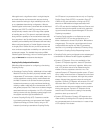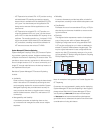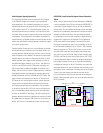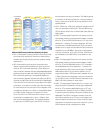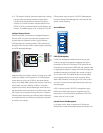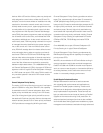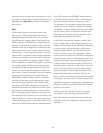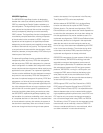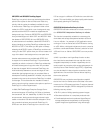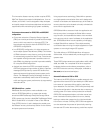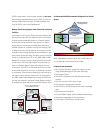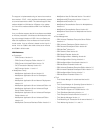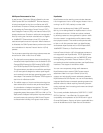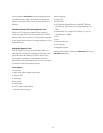50
GDPS/PPRC and GDPS/XRC FlashCopy Support
FlashCopy is a point-in-time copy technology that allows
point-in-time copies of disk volumes to be made very
quickly, with the copies immediately available for read
or write access. FlashCopy can operate in either of two
modes, the COPY mode which runs a background copy
process and the NOCOPY mode that suppresses the
background copy. Previously GDPS/PPRC and GDPS/XRC
have provided support for both COPY and NOCOPY. With
the release of GDPS/PPRC V3.2 and GDPS/XRC V3.2,
an enhancement now available, called NOCOPY2COPY,
allows changing an existing FlashCopy relationship from
NOCOPY to COPY. This allows you the option of always
selecting the NOCOPY option of FlashCopy and then con-
verting it to the COPY option when you want to create a full
copy of the data in the background at a non-peak time.
Another enhancement now available with GDPS V3.2
is support for Incremental FlashCopy. This provides the
capability to refresh a volume in a FlashCopy relationship
and reduce background copy time when only a subset
of data has changed. With Incremental FlashCopy, the
initial relationship between a source and target is main-
tained after the background copy is complete. When a
subsequent FlashCopy establish is initiated, only the data
updated on the source since the last FlashCopy is copied
to the target. This reduces the time needed to create a
tertiary copy thus giving customers the option to perform a
FlashCopy on a more frequent basis.
In 2003, IBM TotalStorage Enterprise Storage Server
announced support of FlashCopy V2. Refer to Hardware
Announcement 103-141, dated May 13, 2003. Prior to this
announcement, both source and target volumes had to
reside on the same LSS within the disk subsystem. Since
this constraint has been removed with FlashCopy V2,
GDPS can now allow a FlashCopy from a source in one
LSS to a target in a different LSS within the same disk sub-
system. This new fl exibility can help simplify administration
and capacity planning for FlashCopy.
GDPS/PPRC Multiplatform Resiliency for zSeries
GDPS/PPRC has been enhanced to include a new func-
tion: GDPS/PPRC Multiplatform Resiliency for zSeries.
This function is especially valuable for customers who
share data and storage subsystems between z/OS and
Linux on zSeries – for example, a SAP application server
running on Linux on zSeries and a SAP DB server running
on z/OS. With a multi-tiered architecture, there is a need to
provide a coordinated Disaster Recovery solution for both
z/OS and Linux on zSeries. GDPS/PPRC can now provide
that.
z/VM 5.1 provides a new HyperSwap function so that
the virtual device associated with one real disk can be
swapped transparently to another. HyperSwap can be
used to switch to secondary disk storage subsystems mir-
rored by Peer-to-Peer Remote Copy (PPRC). HyperSwap
can also be helpful in data migration scenarios to allow
applications to use new disk volumes without requiring
them to be quiesced.
GDPS/PPRC can provide the reconfi guration capabili-
ties for the Linux on zSeries servers and data in the same
manner as for z/OS systems and data. To support planned
and unplanned outages, GDPS is designed to provide the
following recovery actions:
• Re-IPL in place of failing operating system images
• Site takeover/failover of a complete production site
• Coordinated planned and unplanned HyperSwap of
storage subsystems transparently to the operating
system images and applications using the storage



